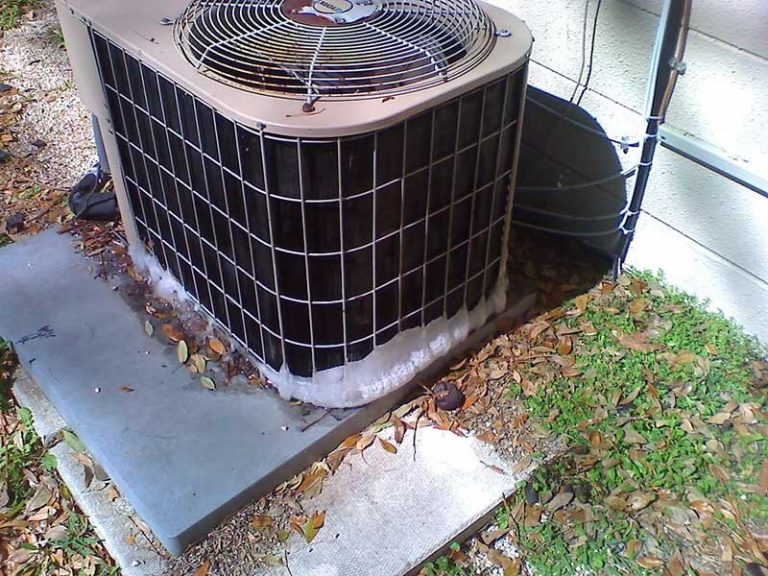Heat pumps are a reliable and cost-effective solution to heating and cooling homes without the need for ductwork. These units use refrigerant to transfer heat from outside sources directly into your air handler for heating or vice versa.
But your heat pump shouldn’t freeze over, especially not in the summertime! If you’re noticing ice on your unit, there are a few reasons this might be happening. We’ve created a short list of causes and solutions.
Typically, if ice forms on your outdoor unit or air handler coil, immediately shut down your system and use warm water or air to dissolve it. For more complex repairs, it may be prudent to contact an HVAC pro.
Need to hire a professional for your HVAC system concerns? Contact the team at Anderson Air.
Read below to see why your heat pump is frozen over.
Dirty coils
No matter its appearance, one of the main causes of heat pump failure in summer can often be traced back to dirty coils.
A heat pump works by cooling temperatures over refrigerant that travels through an indoor evaporator coil; over time, this coil can become covered in dirt and grime, which impedes warm air from passing over it, leading to excessive condensation and the freezing up of your coil.
An effective way to prevent this problem is to regularly clean your coils using special tools and take measures such as removing their outer casing and top cover before using a specific cleaning solution on them. Clean coils are more energy efficient and minimize repair costs over time.
Low refrigerant levels
Ironically, if your heat pump has ice on it, it could be a sign of low refrigerant levels. If this is the case, your local HVAC pro will need to top up your system to get everything back in working order. Don’t try to refill it yourself – refrigerant is a dangerous, toxic chemical that should only be handled by professionals.
In the meantime, you can dethaw your heat pump by shutting it off and running the fan.
Blocked return vents
Blocked air vents can lead to frozen condenser coils as air is not properly transferred from indoor to outdoor units. Therefore, all of your vents should remain open to ensure every room receives enough heating and cooling and to prevent uneven temperatures that damage furniture.
Avoid blocking return vents with furniture, decorations or storage bins as this will obstruct airflow and can result in HVAC issues, including your heat pump freezing up. If ice still forms after defrosting or turning back on, contact an HVAC specialist for inspection and servicing as soon as possible.
Poor airflow
Heat pumps that ice up during the summer often indicate there is an issue with airflow in your home. Monitoring your HVAC system is essential. When frost appears on an interior evaporator coil, take note of it and inspect it further.
Cooling and heating your home using a heat pump is relatively straightforward: refrigerant coolant absorbs ambient heat in your outdoor unit and transfers it to the evaporator coil in your interior air handler, where cold air blows over it to remove and distribute the heat throughout your home.
Improper airflow restricts the refrigerant’s ability to transfer heat efficiently, leading to frozen coils. Poor airflow could be caused by dirty filters, broken blowers, or blocked return vents; often, defrosting or cleaning may help, though in serious situations, professional assistance should be sought out. If the issue persists, it is recommended that you contact professional drain cleaning services.
How to defrost your unit
Ice buildup could be caused by poor air filter performance or blocked vents which should be addressed immediately before they become a larger issue!
If your heat pump’s evaporator coil has frozen over, even temporarily, switch the fan from “auto” to “on.” This will allow your evaporator coil to defrost and prevent refrigerant lines from freezing over.
If you need help identifying the cause, contact a professional. It’s also good to note that preventative maintenance with an HVAC specialist is the key to keeping your cooling and heating systems in peak condition.

